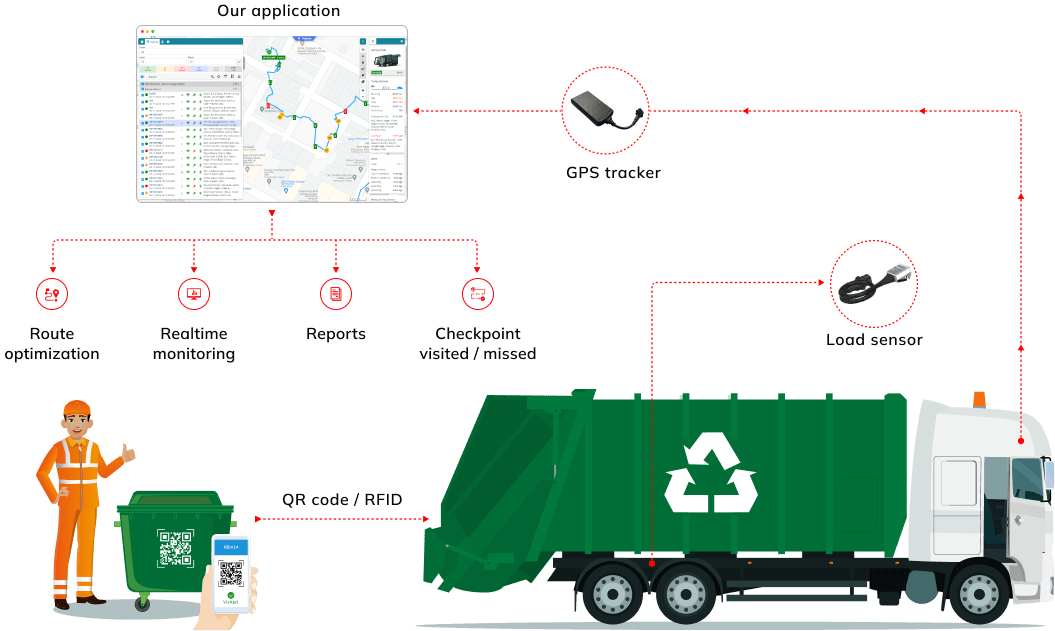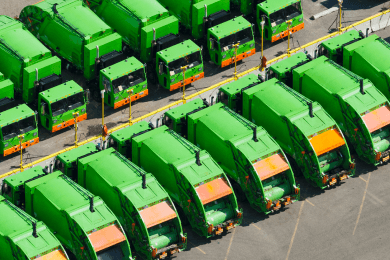Waste management is a growing concern worldwide. In Bangladesh, where restaurants operate late into the night, there was a need for efficient nighttime waste collection services. The government took up this challenge and sought a solution to manage waste after hours. Our software, which successfully addresses scheduling and tracking issues, played a vital role in this project. In this use case, we will see the challenges faced by Bangladesh government, the solution we provided, and the resulting benefits.
Transforming Waste Management in Bangladesh
CHALLENGES

Limited Visibility
The government had limited visibility into whether restaurant waste was being collected daily or not.
Space Constraints
Many restaurants in urban areas, have limited space for waste storage and disposal. This leads to issues like overflowing bins.
Hygiene and Odor Control
Managing waste in a way that maintains high hygiene standards and controls unpleasant odors is a constant challenge.
Time Management
With restaurants closing at different times, efficient waste collection routes were hard to plan.
Dumping Concerns
There were concerns about whether waste collected was being dumped at the designated sites or not.
Government Losses
The government was incurring losses in managing waste effectively.
SOLUTIONS
- Efficient Collection Planning: The software plans the best routes for waste collection. It adds stops based on when restaurants close. This ensures waste is picked up without any delays.
- Instant Visibility: The software provides real-time updates on waste collection. The government can see if waste is collected from restaurants every day.
- Proof with QR Codes: Waste collectors use a mobile app to scan QR codes on waste bins. This confirms they’ve collected the waste.
- Visual Proof: Collectors take pictures of the bins before and after collecting waste to prove they did the job. These images are handy for reporting and as evidence.
- Load Sensors: Vehicles have sensors that record when they’re loaded and emptied. This adds transparency to waste collection activities.
- Revenue Generation: The government creates pricing plans based on restaurant size and waste volume. The software helps track services given to each restaurant. It handles billing and payments, making it a steady source of revenue for the government.


BENEFITS
Enhanced Efficiency
With the software’s efficient collection planning, waste is picked up promptly without delays, reducing the chances of overflowing bins and street litter.
Real-time Transparency
Instant visibility into waste collection activities ensures that restaurant waste is collected daily, enhancing accountability and transparency.
Hygiene Control
Efficient waste collection scheduling and management contribute to maintaining high hygiene standards, while minimizing the risk of unpleasant odors in urban areas.
Time Management
The software’s ability to plan routes based on varying restaurant closing times optimizes time management, ensuring effective waste collection without wasted resources.
Collection Proof
The use of QR code scanning and image verification offers concrete proof of waste collection, reducing concerns about whether waste was collected and deposited correctly.
Revenue Generation
The government’s ability to create pricing plans based on restaurant size and waste volume not only helps recover costs but can also lead to revenue generation, making waste management a self-sustaining service.
